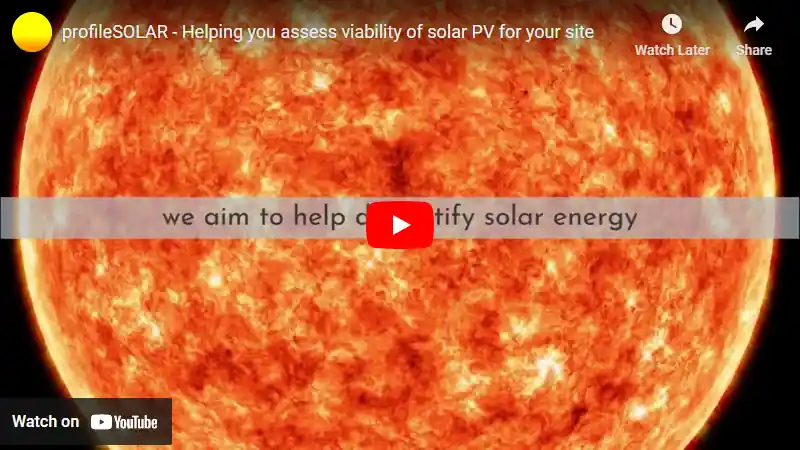

Prescott, Arizona, located in the Northern Sub Tropics at coordinates 34.5926, -112.4238, offers a promising environment for solar energy generation throughout the year. The location's solar potential varies across seasons, with distinct patterns of electricity output from photovoltaic (PV) systems.
Seasonal Solar Performance
Spring and summer present the most favorable conditions for solar energy production in Prescott. During spring, solar panels can generate an impressive 7.90 kWh per day for each kilowatt of installed capacity. Summer follows closely, with a daily output of 7.67 kWh per kW. These seasons offer long daylight hours and typically clear skies, maximizing solar energy capture. Autumn sees a moderate decrease in solar output, with panels producing 5.30 kWh per day per kW installed. This reduction is due to shorter days and the sun's lower position in the sky. Winter experiences the lowest solar generation, with 3.76 kWh per day per kW, as a result of the shortest daylight hours and the sun's lowest annual position.Optimizing Solar Installation
To maximize year-round solar energy production in Prescott, fixed solar panels should be installed at a tilt angle of 30 degrees facing south. This angle is calculated to capture the optimal amount of sunlight throughout the year, considering the Earth's elliptical orbit and the location's latitude.Environmental Considerations
While Prescott's climate is generally favorable for solar energy production, there are some environmental factors to consider: 1. Dust and pollen: Prescott's semi-arid climate can lead to dust accumulation on solar panels, potentially reducing their efficiency. Regular cleaning and maintenance can mitigate this issue. 2. Monsoon season: From July to September, Prescott experiences a monsoon season with increased cloud cover and rainfall. While this may temporarily reduce solar output, the overall impact is minimal compared to the high production during the rest of the year. To address these factors, consider installing panels with self-cleaning technologies or implementing a regular maintenance schedule. Additionally, using high-quality, weather-resistant panels can help ensure consistent performance despite occasional adverse weather conditions. In conclusion, Prescott, Arizona, presents an excellent location for solar PV installations, with strong potential for energy generation throughout the year, particularly during spring and summer months. By optimizing panel placement and addressing minor environmental challenges, solar energy systems in this area can operate at high efficiency levels.Note: The Northern Sub Tropics extend from 23.5° latitude North up to 35° latitude.
So far, we have conducted calculations to evaluate the solar photovoltaic (PV) potential in 3051 locations across the United States. This analysis provides insights into each city/location's potential for harnessing solar energy through PV installations.
Link: Solar PV potential in the United States by location
Solar output per kW of installed solar PV by season in Prescott
Seasonal solar PV output for Latitude: 34.5926, Longitude: -112.4238 (Prescott, United States), based on our analysis of 8760 hourly intervals of solar and meteorological data (one whole year) retrieved for that set of coordinates/location from NASA POWER (The Prediction of Worldwide Energy Resources) API:




Ideally tilt fixed solar panels 30° South in Prescott, United States
To maximize your solar PV system's energy output in Prescott, United States (Lat/Long 34.5926, -112.4238) throughout the year, you should tilt your panels at an angle of 30° South for fixed panel installations.
As the Earth revolves around the Sun each year, the maximum angle of elevation of the Sun varies by +/- 23.45 degrees from its equinox elevation angle for a particular latitude. Finding the exact optimal angle to maximise solar PV production throughout the year can be challenging, but with careful consideration of historical solar energy and meteorological data for a certain location, it can be done precisely.
We use our own calculation, which incorporates NASA solar and meteorological data for the exact Lat/Long coordinates, to determine the ideal tilt angle of a solar panel that will yield maximum annual solar output. We calculate the optimal angle for each day of the year, taking into account its contribution to the yearly total PV potential at that specific location.

Seasonally adjusted solar panel tilt angles for Prescott, United States
If you can adjust the tilt angle of your solar PV panels, please refer to the seasonal tilt angles below for optimal solar energy production in Prescott, United States. As mentioned earlier, for fixed-panel solar PV installations, it is optimal to maintain a 30° South tilt angle throughout the year.
| Overall Best Summer Angle | Overall Best Autumn Angle | Overall Best Winter Angle | Overall Best Spring Angle |
|---|---|---|---|
| 18° South in Summer | 39° South in Autumn | 49° South in Winter | 27° South in Spring |
Our recommendations take into account more than just latitude and Earth's position in its elliptical orbit around the Sun. We also incorporate historical solar and meteorological data from NASA's Prediction of Worldwide Energy Resources (POWER) API to assign a weight to each ideal angle for each day based on its historical contribution to overall solar PV potential during a specific season.
This approach allows us to provide much more accurate recommendations than relying solely on latitude, as it considers unique weather conditions in different locations sharing the same latitude worldwide.
Calculate solar panel row spacing in Prescott, United States
We've added a feature to calculate minimum solar panel row spacing by location. Enter your panel size and orientation below to get the minimum spacing in Prescott, United States.
Our calculation method
- Solar Position:
We determine the Sun's position on the Winter solstice using the location's latitude and solar declination. - Shadow Projection:
We calculate the shadow length cast by panels using trigonometry, considering panel tilt and the Sun's elevation angle. - Minimum Spacing:
We add the shadow length to the horizontal space occupied by tilted panels.
This approach ensures maximum space efficiency while avoiding shading during critical times, as the Winter solstice represents the worst-case scenario for shadow length.
Topography for solar PV around Prescott, United States
Prescott, Arizona, located at approximately 34.5926°N and 112.4238°W, is situated in a diverse and picturesque landscape that combines elements of mountains, valleys, and high desert terrain. The city itself sits at an elevation of around 5,400 feet above sea level, nestled within the Bradshaw Mountains. The topography surrounding Prescott is characterized by rolling hills, steep canyons, and rugged mountain peaks. To the west and southwest, the terrain becomes increasingly mountainous, with the Bradshaw Mountains dominating the landscape. These mountains feature pine-covered slopes and rocky outcroppings, creating a striking contrast with the lower-lying areas. To the north and east of Prescott, the landscape transitions into more open, high desert terrain. This area is marked by gently rolling hills, scattered with juniper and pinyon pine trees, as well as various desert shrubs and grasses. The terrain here is generally less rugged than the mountainous regions to the west, with wider valleys and more gradual elevation changes.
Potential Areas for Large-Scale Solar PV
When considering areas near Prescott that might be suitable for large-scale solar photovoltaic (PV) installations, several factors come into play. The ideal locations would have relatively flat terrain, abundant sunshine, and minimal environmental or cultural constraints. The areas to the north and east of Prescott, where the landscape opens up into high desert, offer the most promising potential for solar PV development. These regions typically have more consistent sunlight exposure due to fewer obstructions from mountains or dense vegetation. The gentler topography in these areas would also make construction and maintenance of solar facilities more feasible and cost-effective. Specific locations that might be suitable include the expansive valleys and plateaus found in Yavapai County, particularly to the northeast of Prescott. These areas often have large tracts of open land with minimal development, which could accommodate extensive solar arrays without significant conflicts with existing land uses. It's important to note that while these areas may be topographically suitable, any large-scale solar development would need to consider other factors such as proximity to existing power infrastructure, environmental impact assessments, and local zoning regulations. Additionally, care should be taken to avoid areas of cultural significance to indigenous communities or locations with sensitive ecosystems.United States solar PV Stats as a country
United States ranks 2nd in the world for cumulative solar PV capacity, with 95,209 total MW's of solar PV installed. This means that 3.40% of United States's total energy as a country comes from solar PV (that's 26th in the world). Each year United States is generating 289 Watts from solar PV per capita (United States ranks 15th in the world for solar PV Watts generated per capita). [source]
Are there incentives for businesses to install solar in United States?
Yes, there are several incentives for businesses wanting to install solar energy in the United States. These include federal tax credits, state and local rebates, net metering policies, and renewable energy certificates (RECs). Additionally, many states have enacted legislation that requires utilities to purchase a certain amount of electricity from renewable sources such as solar.
Do you have more up to date information than this on incentives towards solar PV projects in United States? Please reach out to us and help us keep this information current. Thanks!
Citation Guide
Article Details for Citation
Author: Aaron Robinson
Publisher: profileSOLAR.com
First Published: Saturday 11th of January 2025
Last Updated: Monday 3rd of March 2025
Tell Us About Your Work
We love seeing how our research helps others! If you've cited this article in your work, we'd be delighted to hear about it. Drop us a line via our Contact Us page or on X, to share where you've used our information - we may feature a link to your work on our site. This helps create a network of valuable resources for others in the solar energy community and helps us understand how our research is contributing to the field. Plus, we occasionally highlight exceptional works that reference our research on our social media channels.
Feeling generous?

Share this with your friends!


Compare this location to others worldwide for solar PV potential
The solar PV analyses available on our website, including this one, are offered as a free service to the global community. Our aim is to provide education and aid informed decision-making regarding solar PV installations.
However, please note that these analyses are general guidance and may not meet specific project requirements. For in-depth, tailored forecasts and analysis crucial for feasibility studies or when pursuing maximum ROI from your solar projects, feel free to contact us; we offer comprehensive consulting services expressly for this purpose.
Helping you assess viability of solar PV for your site
Calculate Your Optimal Solar Panel Tilt Angle: A Comprehensive Guide
Enhance your solar panel's performance with our in-depth guide. Determine the best tilt angle using hard data, debunk common misunderstandings, and gain insight into how your specific location affects solar energy production.






